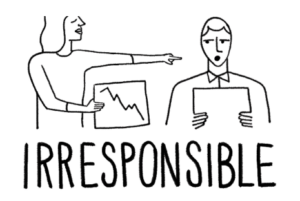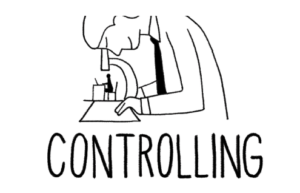Mary E. Marshall's Blog, page 13
December 4, 2019
Your Strategic Plan for 2020 – How’s It Going?
 It’s that time of year again. Time to review the strategic plan and either update it or create a new one for 2020. If you’ve been doing reviews and updates monthly or quarterly, or even better bi-weekly, then good for you, you are already most of the way there, but you are in the minority. It was Eisenhower who said, “Plans are nothing, planning is everything,” and he was right.
It’s that time of year again. Time to review the strategic plan and either update it or create a new one for 2020. If you’ve been doing reviews and updates monthly or quarterly, or even better bi-weekly, then good for you, you are already most of the way there, but you are in the minority. It was Eisenhower who said, “Plans are nothing, planning is everything,” and he was right.
One of your goals for 2020 should be to keep your strategic plan alive and current throughout the year. There are 4 key steps for doing that successfully:
Review
Revise
Reinvent
Repeat
I often go into companies and they are so busy doing business, meaning day-to-day operations, etc., that the goals they set out at the beginning of the year have ended up ignored. Don’t get me wrong, these companies are having some success and things are going along well, but what if more attention had been paid to those nicely laid out plans? Would they have achieved that extra 10% top or bottom line? Would they have added that crucial market sector they have been after for years? The reality is, it’s doubtful. Let’s consider why.
Continuous planning coupled with execution is one of the keys to business success. If you plan at the beginning of the year and never adjust you are always reacting to what’s happening instead of making things happen. To change this trajectory start by reviewing what you thought you wanted to accomplish this year – how did you do? What happened? What can we learn from that? The next step is to revise, change what didn’t work, and come up with some new ideas or strategies that might work. Or maybe the goal or strategy itself was not a good one, so chuck it out and come up with something more relevant.
It’s critical that you don’t do this process of reviewing and revising in a vacuum. You may be the owner or head of the company, but that doesn’t mean you have all the best ideas. The ideas are in the room. They are from your managers and employees whom you have hired and put faith in. Listen to what they have to say and shape it into a plan that everyone can get behind.
Step 3 is to reinvent. So often we are caught in our plan because of our beliefs around “what is.” It colors our beliefs about what “could be.” When I facilitate planning exercises, I tell people to think 3 years ahead and color in the picture for me of what the company looks like, who the customers are, what products are you selling and to whom, etc. But NOT based on the facts of today, based on the possibilities of tomorrow. It’s only in our belief that something can happen that it will. So reinvent the future, not by the rules or restrictions of today’s landscape, but by the possibilities not yet imagined.
This doesn’t need to be a long, drawn-out process, you need a competent facilitator (preferably not you, the owner or leader) and a target of where you want to go. The bones of a plan that can be implemented and an easy process for getting there. Too much complexity in the strategic plan and everyone will lose interest. Keep it simple and executable. And remember to build in your review times so you can revise and reinvent, and then finally, repeat!
The post Your Strategic Plan for 2020 – How’s It Going? appeared first on Mary Marshall // CEO Coach.
November 27, 2019
Reflecting with Gratitude Is Important in Business
As you start to close out 2019 and look to 2020 – revising old plans, making new ones, celebrating successes and learning from failures, don’t forget to reflect, at least for a moment today.
– revising old plans, making new ones, celebrating successes and learning from failures, don’t forget to reflect, at least for a moment today.
As business leaders, you are always looking out ahead, mitigating risks, taking on new challenges and sometimes you can forget what is right in front of you. Your family, your employees, your vendors and your customers, all have contributed to making you who you are, what your businesses are, and the impact you have had. When was the last time you said thank you?
Most often, the first one you think of is your customers and you may send a card or gift of thanks. Next on the list is your vendors, which you sometimes acknowledge with a card, a gift or a call. Third is your employees and you likely have a holiday party of some sort, a bonus, a gift or all of the above. Lastly, you might think to thank your family.
I might suggest that the order is completely backward. The most important people in your life are your family, after all, what are you really doing this for anyway? And who has sacrificed the most while you built your business? They have. Next on the priority list are your employees. They helped you build, deliver, sell, execute and stay in business every single day. And most will give their all every day to make sure you succeed in your goals. What are you doing to help them succeed in theirs?
There is no better time than the present to say thanks. A meaningful thank you from the heart for all those who have helped you along the way. The holidays are about giving back and saying thank you.
So thank you to all of you who have helped my business this year. I appreciate all the help and support I’ve received over the year and hope to pay it forward many times each day. Join me and the holidays will not be an event but a way of life, every day of the year.
The post Reflecting with Gratitude Is Important in Business appeared first on Mary Marshall // CEO Coach.
November 20, 2019
How (NOT) to Be a Leader – Hub and Spokin’
 This week we complete the serialization of How (NOT) to Be a Leader Volume 1. We hope you have enjoyed the book and that you will get a laugh and a lesson out of the final section, Chapter 24 – Hub and Spokin’. Keep an eye out for the new books in the “How (NOT) to…” series coming in January!
This week we complete the serialization of How (NOT) to Be a Leader Volume 1. We hope you have enjoyed the book and that you will get a laugh and a lesson out of the final section, Chapter 24 – Hub and Spokin’. Keep an eye out for the new books in the “How (NOT) to…” series coming in January!
Sent: Monday, July 24 at 9:30 am
From: CEO
To: Executive Team
Subject: One‑to‑Ones Today
I’ve got some critical information to share with each of you so starting at 11:00. I’ll make myself available for individual meetings. Please just sign up with my assistant. I’ll need 30 minutes with each of you. Clear your schedule to fit mine if you’ve already got something going.
All the leadership books tell you that, in order to grow a great team, you need to mentor people. Naturally, you might have found mentoring to be a strong suit of yours as people always gravitate towards you as a leader and want to learn from you. The key to mentee development is to meet individually with each of your team members. You’re probably thinking, “Geez, doesn’t that take up a lot of time?” Not if you do it the right way!
Only do it once a month. That’s plenty of time for you to get your point across. These meetings are called one‑to‑ones, but it’s really your time to ascertain whether or not this person is being loyal to you. Not to the company, only to you. Of course, you will impart some words of wisdom, but if they don’t respond with a sufficient level of praise and gratitude, you might have a problem. Naturally, you’ll want to tell them it’s all about them and you are there to listen, but seriously, what could they possibly say that you don’t already know—or should know!
So, here’s the real brilliance of mentoring. Call it hub and spokin,’ a takeoff on some speaker somewhere who talked about culture. Bottom line, you’re the hub, always because, as the hub, you’re the greatest person in the room and everyone else is well, less than that. If you want to keep your team in line, you have to be the repository of all information, and you get to decide who hears what. Whether it’s the same information you’re sharing with each of them or different information, the important thing is to do it separately! This way you maximize your pull. If your people all hear the same thing at the same time, you run the risk of them ganging up on you because you’ve lost your leverage! The key is keeping them isolated and guessing.
Don’t bother to set these as recurring meetings, because, Gawd, that would really play havoc with your schedule, and you want to maintain as much flexibility as possible. Just go ahead and set them when you have a hole in your schedule or when something necessitates you getting all your little minions in line. Besides, this keeps them on their toes in anticipation of their monthly one‑to‑one with you. Remember, unpredictability is key.
Unpredictability is where the brilliance comes in. They won’t have any idea what you want to talk about, so you already have them on the defensive. Then tell them what you’re upset about and see what solutions they have for you. If one of them has a good one, say that’s exactly what you were thinking and then tell them that you really look at them as your second‑in‑command, regardless of whether you do or not. Saying this will puff them up and get them on your side, which is what you want. If they have something they need to talk about, tell them to schedule some other time with your assistant and make sure it never shows up on your calendar. Also, be sure to tell them that you expect them to figure out their own issues because that’s how you got to where you are, isn’t it? Nobody helped you! Make them feel small for even asking.
Now, a critical point here is to make sure they know that what you discussed is a secret between you and them. Just to make sure they feel special, make a couple of snarky comments about some of the other managers so they know you really mean it. This is a great way to test who can be trusted and who cannot. If for whatever reason they start comparing notes, well, they have just violated your rules and they will not be in the inner circle for long.
The easy part of this whole process is that you simply rinse and repeat with all your direct reports. Since you aren’t really planning on listening to anything they have to say, you can just sit back and work on improving your facial expressions and body language. Saying the same thing to each one is the point. They are never going to question what you say if they think they are the chosen heir. Just keep telling them they are! They are all the spokes to your hub, and your job is to make sure they never become a hub. That could be dangerous for you, and it’s certainly not leader‑like.
Wasn’t that easy? Mentoring in thirty minutes or less, and you now have more time to hit the links! One final note on this: If you do catch your people comparing notes on the fact that you told several of them the same thing about them being your special manager or next in line for a promotion, or that you told them different things, deny, deny, deny. Ask them why they would spread rumors like that when, of course, you said no such thing. Question them as to how they could have possibly misunderstood! Then write them up.
The key is to stop that spoke in its tracks. Put a stick in those spokes so the rider does a face‑plant.
Let’s Get Real
Having private meetings for disseminating public information creates a culture of mistrust. Meet with teams in groups of three or more. Never tell someone they are your chosen one or that they are in line for a promotion if they aren’t. That’s just mean and disingenuous. Mentorship is about the mentee, not you, so ask them how they want to grow into their leadership shoes and how you can help. This is not about you!
Being a leader is about being open and honest. Never letting others hear your conversations or sending different messages to different people teaches a very dangerous form a leadership, one that is about mistrust and how to keep that value alive.
People do not behave their best in a culture of mistrust. In order to behave and perform their best, people need to know that the words of their leaders and fellow employees are honest and can be heard in the light of day. If something can’t be aired in public and it’s something the entire company should know, it should not be held in a didactic conversation.
Leaders grow with information, truth, and each other. Lead the way.
Download this chapter for free – How (NOT) to Be a Leader – Chapter 24
The post How (NOT) to Be a Leader – Hub and Spokin’ appeared first on Mary Marshall // CEO Coach.
November 13, 2019
How (NOT) to Be a Leader – Gender Matters
 This week we continue the serialization of, How (NOT) to Be a Leader Volume 1, in preparation for the release of the next two books, How (NOT) to Build a Great Team and How (NOT) to Create a Winning Strategy. We hope you will enjoy Chapter 23 – Gender Matters
This week we continue the serialization of, How (NOT) to Be a Leader Volume 1, in preparation for the release of the next two books, How (NOT) to Build a Great Team and How (NOT) to Create a Winning Strategy. We hope you will enjoy Chapter 23 – Gender Matters
Sent: Wednesday, May 3 at 10:00 am
From: Christine
To: Matt L.
Subject: Strategic Plan Due Soon …
Hi there Matt,
Hey buddy! I wanted to give you a gentle nudge that your Q1 plan is due to me soon. The original deadline was Friday but I know you’ve been a busy guy so how about you try to get it to me by next Wednesday? Does that work for you? I really feel for you with all the pressure you’ve been under, you sure are handling it like a champ. As usual! 
November 6, 2019
How (NOT) to Be a Leader – Hazing as an Art Form
 This week we continue the serialization of, How (NOT) to Be a Leader Volume 1, in preparation for the release of the next two books, How (NOT) to Build a Great Team and How (NOT) to Create a Winning Strategy. We hope you will enjoy Chapter 22 – Hazing as an Art Form
This week we continue the serialization of, How (NOT) to Be a Leader Volume 1, in preparation for the release of the next two books, How (NOT) to Build a Great Team and How (NOT) to Create a Winning Strategy. We hope you will enjoy Chapter 22 – Hazing as an Art Form
Sent: Sunday, April 2 at 9:49 pm
From: CEO
To: Management Team
Subject: Performance Transparency
Team,
Let’s face it, we’ve got a performance problem on our team. I’d like to see a stack ranking of all the PMs based on the amount of Q2 revenue they’ve managed and their respective gross margins. Once we have that, I’d like to call a meeting, get them all in a room, and put some feet to the fire. The slackers need to know who’s carrying their weight and the performers need to be publicly rewarded for their hard work and accomplishments. I don’t have a problem sending this report to allstaff@ either so let’s plan on doing that directly after the meeting.
This is a business, not summer camp. And you are the leader, responsible for inspiration and positive motivation, but also for administering the smackdown when it’s required. Peak performance means cracking the whip every now and again, so if you have to do it, do it right and do it hard.
Great leaders are masters of discipline and obedience. Oftentimes this means making your authority and your expectations crystal clear. Not only do you need to lead by example, you need to make examples of those who are not taking your leadership and your requirements seriously. There should be nowhere in your organization to hide and nowhere to run when the going gets tough.
There are many proven techniques and methodologies when the situation requires the reset of performance standards. Stack ranking is an effective way to let everyone know who the performance winners and losers are. The people on the top of the stack will be seen as exemplary performers, respected and revered. The people on the bottom of the stack will be seen as slackers and the bag to drag for others. This will cause a tribal phenomenon known as corporacide—a cost-effective and swift method for making room for new talent.
Three‑hundred‑sixty‑degree anonymous feedback is also an effective way to publicize humiliation and shame that are deserved for lack of performance. Being anonymous in nature, it allows for brutally honest feedback, which is often needed by those too clueless to recognize their own laziness or ineffectiveness. Peak performers need to vent their frustration with their coworkers, and anonymous feedback is a fantastic way to accomplish your mission for both the giver and the receiver of the feedback.
Leadership means sometimes it’s going to hurt them a lot more than it’s going to hurt you. So be swift, decisive, and make every whack count.
Let’s Get Real
Kiss your culture goodbye if you resort to shame, humiliation, or bullying. Bullying and abuse do nothing but degrade and debase your employees, and not only are they wrong and unethical, they are downright dangerous. These practices can inflict lasting emotional damage to those who are subjected to them as well as those who are forced to administer them. They can cause permanent damage to personal confidence while derailing careers. In the worst cases, they can incite violence, retribution, and self‑harm.
As a leader, you are 100 percent responsible for the safety and well‑being of your employees at all times. Ensuring that abuse is not happening anywhere in your organization is on you. If it happens below you, deal with it immediately by terminating the abusers. If it happens above you, report it to your state’s department of labor immediately, and include specifics.
Bullying happens in the workplace at a much higher rate than most of us realize. The Workplace Bullying Institute (WBI) defines bullying as “repeated mistreatment: sabotage by others that prevented work from getting done, verbal abuse, threatening conduct, intimidation, and humiliation.” Just the fact that the WBI exists should be troubling enough for most employers and employees alike. And to prove the point, a 2010 poll conducted by Zogby International for WBI showed that fully 37% of the total US workforce had been bullied at work. What’s even more frightening is that an additional WBI report showed that 52% of time employees reported that employers did nothing to stop the bullying.*
* Brené Brown, “3 Ways to Kill Your Company’s Idea Stifling Shame Culture,” Fast Company, September 13, 2012.
Download this chapter for free – How (NOT) to Be a Leader – Chapter 22
The post How (NOT) to Be a Leader – Hazing as an Art Form appeared first on Mary Marshall // CEO Coach.
October 30, 2019
How (NOT) to Be a Leader – Winning the Blame Game
 This week we continue the serialization of, How (NOT) to Be a Leader Volume 1, in preparation for the release of the next two books, How (NOT) to Build a Great Team and How (NOT) to Create a Winning Strategy. We hope you will enjoy Chapter 21 – Winning the Blame Game.
This week we continue the serialization of, How (NOT) to Be a Leader Volume 1, in preparation for the release of the next two books, How (NOT) to Build a Great Team and How (NOT) to Create a Winning Strategy. We hope you will enjoy Chapter 21 – Winning the Blame Game.
Sent: Friday, October 18 at 5:45 am
From: VP Operations
To: CEO
Subject: Production Schedule Behind
Mark,
We have a huge problem with the production schedule.
It’s 6 weeks behind and we’re at risk of not getting the product to market in time for the holidays. I told Tom a month ago that he needed to step it up and start creating overtime schedules for his team so this wouldn’t happen. Now finance is saying that they wouldn’t approve the overtime because we don’t have the funds, but nobody on that team told me at the time. Max’s situation with his unhappy development team doesn’t help matters. They hate him, productivity is suffering, and he’s not doing anything about it. Sue is a basket case, she missed 4 days last month because of a sick kid or something and didn’t hire the people we needed in Q2. To make matters worse, customer service has a massive backlog again—I was totally unaware of this until today. The whole thing is just a mess.
Leadership is about holding others accountable and not holding back when it comes time to call out others who aren’t pulling their weight. The best way to not end up holding the bag is to have a constant eye on your peers and make sure that your superiors know exactly where to lay the blame when things go sideways. Make sure that those beneath you never blame you. Sometimes you must give everyone insight when others’ poor performance isn’t so obvious, and sometimes you might even need to inflate the story to make sure the responsibility is deflected away from you.
The more you focus on blaming, and the more detailed you can be in your accounts of where to lay that blame, the more confusing it will become for those you are making your case to. This is a good thing! Just keep piling it on in a never‑ending stream of crafty storytelling sprinkled with somewhat truthful accounts of this and that injustice. The more you stay at it, the more solid the perception of your lack of responsibility will be.
As a leader, it’s important to recognize and accept the fact that you are surrounded by incompetence. Laziness, apathy, distraction, stupidity, low energy, lack of stamina, lying, failure, general loserness, ugliness, and weakness is everywhere you look. You should always be looking for incompetence, and when you find it, point it out loudly and with complete conviction and confidence. One of the most valuable qualities in a good leader is awareness, including self‑awareness, of the fact that you didn’t get to where you are by being responsible for anything failure related. You got here by being responsible for success only. And that which is perceived as failure is actually success because if it hadn’t failed like you intended it to, it wouldn’t have been so successful. Or something like that.
Let others worry about the view from under the bus. You’re too busy driving it.
Let’s Get Real
A cornerstone of great leadership is accountability and taking responsibility for yourself first and foremost. Blaming others is not only poor leadership, it has little if nothing to do with a solution to a problem. When people state the problem but offer nothing in the way of a solution, the only thing they are solving is how to take the focus off of themselves and project it onto others.
At the same time, some good leaders take too much of the blame for the shortcomings of others. Where did I go wrong? What could I have done differently? How did I let them down? While doing some of this kind of self‑reflection is an important exercise in order to learn and improve, doing too much of it is simply not assigning accountability to those to whom it should be assigned. Be cautious with accountability—there is a fine line between ownership and blame. Awareness and a constant monitoring of this ebb and flow will help you both learn and teach.
We will always have performance problems with ourselves, with our peers, and with those, we lead. But as leaders, those are the problems we’re employed to solve. If we’re unable to solve them, then we ourselves are the performance problem.
There are no winners in the blame game because only losers play. As Arnold H. Glasow said, “A good leader takes a little more than his share of the blame, a little less than his share of the credit.”
Download this chapter for free – How (NOT) to Be a Leader – Chapter 21
The post How (NOT) to Be a Leader – Winning the Blame Game appeared first on Mary Marshall // CEO Coach.
October 24, 2019
How (NOT) to Be a Leader – The Waiting Game
 This week we continue the serialization of, How (NOT) to Be a Leader Volume 1, in preparation for the release of the next two books, How (NOT) to Build a Great Team and How (NOT) to Create a Winning Strategy. We hope you will enjoy Chapter 20 – The Waiting Game.
This week we continue the serialization of, How (NOT) to Be a Leader Volume 1, in preparation for the release of the next two books, How (NOT) to Build a Great Team and How (NOT) to Create a Winning Strategy. We hope you will enjoy Chapter 20 – The Waiting Game.
Be right there—taking longer than I thought.
Just got into a fender bender. Cops taking forEVER to write the report.
I threw my back out again, going to have to WFH. Can someone send me all the docs to review?
Slight emergency, gotta run to the vet.
Forgot my password, I can’t log in and nobody in IT is calling me back, so I won’t have feedback for you until tomorrow.
I’m going to be late for the Board meeting—tell them I’m meeting with a customer.
Bad day. Not going to make it by 10. Start without me, but you’ll need to clear your schedules to stay late so you can catch me up on what I missed.
The conference call access code didn’t work for me. What did I miss?
I thought the meeting was on Tuesday. I’m still at my beach house. Postpone.
I’m out of time, it’s just going to have to wait.
Be there in 10.
On my way.
Be there in 20.
That’s exactly right: your schedule comes first, and don’t let them forget it! Great leadership means making sure that those you lead are respectful of you and your schedule. Understanding and accepting that your schedule is the schedule that dictates theirs is their first step in a successful relationship with you. Make this known from the outset, and you will avoid conflict in the future. Not only is there the simple fact that you are busier than anyone else, but there are also specific strategic reasons to operate on your own time and to never feel guilty about making them wait. Don’t accept accusations of being disorganized or rude. Own your lateness and make it work. Here’s how:
Make an entrance. The more important the event or meeting is, the more grand your late entrance should be. This is an opportunity to make a statement about your importance, disrupt the meeting, and get everyone on their toes where they should be! When you enter a meeting in progress, make sure that your hands are full so that someone has to hop up and open the door for you, clear a place for you at the head of the table, and help you with your belongings. This physical manifestation of subservience is a sure‑fire way to start the meeting off right—it’s just starting after all because you’ve just arrived. Having a coffee in hand is a great way to say, “I took my time getting here” without having to say a word. Holding the remains of a muffin or sandwich says, “This meeting is inconvenient for me and interrupts my flow.” Showing up late in your gym clothes says, “I take care of myself first.” And walking into a meeting while wrapping up a call on your cell is the ultimate way of letting everyone know how very, very busy and important you are.
Be indifferent. You do not have time to care or even notice what affect your tardiness or absenteeism has on those you lead. It’s simply not your problem. The second you appear to care or be defensive about it, they will begin to manipulate you, and before you know it, you will be a slave to your team—not a dynamic of great leadership. So, rise above the criticism they might level at you, and ignore them entirely. The only conversation that matters is how they are going to start marching to the beat of your drum.
Never apologize. You can’t be indifferent if you’re defensive or apologetic. Never ever apologize for missing an event or call or being late to a meeting. It’s not your fault, it’s just the way it is, and they have to adapt. You’re the leader; your schedule is the schedule from which all else flows, and the more you put this into practice, the better for everyone. For that matter, never apologize about anything as a leader—it’s weak and for losers.
Save your energy and adopt a scapegoat. If being indifferent or not apologizing is a challenge for you, then the right solution for you is to have a scapegoat. An executive assistant saves you energy by making your excuses for you, while also giving you someone to lay the blame on for your disorganization, lack of respect, and general thoughtlessness. Of course, your assistant should care or appear to care and should be an excellent apologist taking full responsibility for your tardiness and absenteeism If not, fire them now.
Remember: It’s all about you, and practice makes perfect.
Let’s Get Real
As a leader, the Golden Rule applies to you more than anyone. Your actions and words set the tone for your entire organization, so when you are disrespectful and inconsiderate of others, this behavior will be mimicked. Your entire culture will suffer, and before you know it, you will be sitting alone in that conference room while your people play the waiting game right back at you. The intentional culture you want starts with your actions, your behavior, and the values you demonstrate daily. Disrespect others and they will disrespect you. Every child knows this!
Nobody is ever too busy to be considerate. Consideration is not a factor of time, it’s a factor of respect. If your busyness causes you to be chronically late, then you need to take a good hard look at your inability to organize and prioritize and get some help. Others are dependent on your leadership in order to reach their own goals, make their own deadlines, and manage their own workflow. Inconsistencies and lack of reliability on your part makes their jobs infinitely harder. No one will respect you or your time if you don’t start by respecting their time.
So, get it together: be on time, every time.
Download this chapter for free – How (NOT) to Be a Leader – Chapter 20
The post How (NOT) to Be a Leader – The Waiting Game appeared first on Mary Marshall // CEO Coach.
October 11, 2019
How (NOT) to Be a Leader – Follow the Leader
 This week we continue the serialization of, How (NOT) to Be a Leader Volume 1, in preparation for the release of the next two books, How (NOT) to Build a Great Team and How (NOT) to Create a Winning Strategy. We hope you will enjoy Chapter 19 – Follow the Leader
This week we continue the serialization of, How (NOT) to Be a Leader Volume 1, in preparation for the release of the next two books, How (NOT) to Build a Great Team and How (NOT) to Create a Winning Strategy. We hope you will enjoy Chapter 19 – Follow the Leader
Sent: Tuesday, July 25 at 11:30
From: CEO
To: Executive Team
Subject: Best Practices
Attached is the most lovely note that I received from a valued client after our award ceremony the other night. I honestly was not expecting the award at all (especially at my own company event—you guys are too much, thank you!) let alone this gracious note.
It goes to show you how important hand‑written notes and personal gestures are. I’m glad I took the time to send them and I hope you do too. I expect you to learn from this example.
Sharing your insights with the team is important. Of course, it doesn’t always mean that they will follow them, but you have to try or at least give the impression that you are trying. You can’t help it if some of them are rather dim and don’t get it.
But, in the event that you have a few lemmings who can actually learn from your example, it’s tactics like these that need to be shared and emulated. After all, duplicity multiplies and then you’re doing more with much less!
As an example, when attending events that are in your honor (as they should be if you’re attending), make sure that you follow up thoughtfully. While you don’t have time to be thoughtful, there must be someone on your staff who can help you appear thoughtful at all times. One way to accomplish this is to have your assistant write hand‑written thank you notes, sign your name, and send them off in a timely manner. You might be surprised by the heart‑warming response you get in turn—notes of gratitude for your gratitude and exemplary leadership and thoughtfulness. How this was executed is not the point. Like they say, “It’s the thought that counts,” and it was your idea, so there you go.
Make sure to get your whole team together when something like this happens, never let them get out of learning from your excellent example of leadership. It’s important to give everyone a very detailed account of how you did this and why it succeeded. It’s also important to set a new precedent and require that your people do what you did.
Your values and integrity should always be on display for others to emulate—including the tactics you use to display them. If this means shortcuts, leveraging the talents of others, taking credit for results generated from the innovation of others, or just appearing to be more thoughtful or resourceful than you actually are, share these tactics! Everyone will benefit from your knowledge and wisdom. And don’t be stingy with that amazing assistant of yours: once your team understands the value of this type of administrative support, they should all have access to it. He or she will simply have to understand that they are new to the game, and the charades just go with the internship.
Let’s Get Real
It’s as true as it is timeless: Great leaders lead by example. The upside of a leader who sets a good example is that, when the values he or she lives are right and good, they are multiplied and amplified so powerfully that an organization’s brand can become known for its values. And not surprisingly, when a leader leads by example with values that lack integrity or honesty or that are just downright awful, the result is exactly the same: an amplification and multiplication of that same despicable behavior runs rampant throughout the organization, damages the brand, and becomes a firewall keeping good people and talent at bay.
Leadership is infectious, in both the most positive and potentially disastrous ways imaginable. It’s your job as a leader to make sure that you lead by the kind of behavior you want to permeate your organization and out into the marketplace. As the leader you are the keeper, the steward, the guardian, and the master of those values, so make sure you live them every day in every way.
Download this chapter for free – How (NOT) to Be a Leader – Chapter 19
The post How (NOT) to Be a Leader – Follow the Leader appeared first on Mary Marshall // CEO Coach.
October 9, 2019
How (NOT) to Be a Leader – Be Best Buds
 This week we continue the serialization of, How (NOT) to Be a Leader Volume 1, in preparation for the release of the next two books, How (NOT) to Build a Great Team and How (NOT) to Create a Winning Strategy. We hope you will enjoy Chapter 18 – Be Best Buds
This week we continue the serialization of, How (NOT) to Be a Leader Volume 1, in preparation for the release of the next two books, How (NOT) to Build a Great Team and How (NOT) to Create a Winning Strategy. We hope you will enjoy Chapter 18 – Be Best Buds
Sent: Wednesday, October 18 at 11:29 am
From: Suzanne, VP Global Sales
To: John, Regional Sales Associate
Subject: Lunch? And Ouch!
Hey there,
How were your morning sessions? Mine were boring. This conference is a bust. Do you wanna skip the luncheon and just go out and get lunch on our own? At least this thing is in a fun city. But man, those margaritas last night were killers. I had a massive hangover through most of the speakers this morning. As usual, you were hilarious John … and I promise I won’t tell anyone about your choice of karaoke song if you don’t tell anyone about my missing shoe! Ha ha ha! Total walk of shame this morning through the hotel though, seems that guy didn’t mind a little overtime with the one‑shoed chick.
By the way, I can’t have dinner tonight, I have to work on your review because I blew it off last night. It’s due to the C.E. “HO” by Monday. She’s such a skank I hate her.
Me
This is the kind of special bond that makes an employee/employer relationship last. Not only is it an example of getting on the same level and seeing eye to eye with your direct reports, it shows that you’re human, just looking to have a good time like everyone else.
It’s true that it’s lonely at the top. When you’re a great leader, people distance themselves from you because they don’t feel like they’re on the same level as you. If you’re really effective, they will even fear you. But great leaders need friends just like everyone else, so there’s no reason not to reach out and forge a few of those friendships yourself. Bonds and friendships in the workplace can also offer you inside information from the desk‑level workforce. Once you have their trust, they can tell you where to find performance problems, give you a better sense of the culture you’re creating, and best of all, help prop up your confidence by reminding you how great you are and how much everyone adores you.
Business travel is the most effective method for creating some of these bonds. When scheduling business travel, be mindful of who will be joining you on the trip and use this opportunity to create lasting memories and tight bonds with a special employee who you already think highly of or are attracted to. Sharing a what happens on the road stays on the road experience with a subordinate is a sure‑fire way of creating a bond that will result in a lasting friendship and give you an outlet for sharing details about your personal life that you wouldn’t be able to share with just any employee. And hey, you only live once, so if it feels good in the moment, don’t hold back. Once they realize that you have bestowed the gift of friendship and your most intimate secrets (or more!) upon them, they will be even more loyal to you and a better steward of your vision throughout the organization.
Remember, no one is immune to top-down scrutiny, so when the heat’s on you from above, it’s important for your boss to see how much your team adores you. In the workplace, intimacy is hands down the best currency with which to buy loyalty!
Let’s Get Real
Do not confuse stupidity with authenticity. Yes, leaders should be accessible, approachable, and authentic, but if you are in a leadership position, you should show some self‑respect and self‑restraint when it comes to developing intimate friendships and relationships in the workplace.
Creating healthy boundaries for yourself and making them known through your actions doesn’t create distance between you and your employees, it creates the space you need to remain objective. You can be friendly without being friends in the traditional sense and certainly without exchanging knowledge or information that compromises the organization or damages your credibility. You can also be familiar and fun without being one of the gang by appreciating that those friendships do and should exist in the workplace, they just shouldn’t exist with you.
When you buddy up to an employee, single someone out, and put your special rapport with them on display, it may satisfy your need to feel liked, to feel relevant, to feel wanted, but it puts them in a terribly awkward situation with both you and their peers. With you, they no longer have the space they need to challenge you, to earn your respect, or even to enjoy a genuine sense of success when recognized for their achievements. Recognition is one of the best drivers of productivity, but only when it’s recognition for the right reasons. With their peers, the results can be even more catastrophic when they are labeled a suck‑up, which they undoubtedly will be thanks to you
So be friendly but find your own friends.
Download this chapter for free – How (NOT) to Be a Leader – Chapter 18
The post How (NOT) to Be a Leader – Be Best Buds appeared first on Mary Marshall // CEO Coach.
October 2, 2019
How (NOT) to Be a Leader – Micromanage the Shit out of Everything
 This week we continue the serialization of, How (NOT) to Be a Leader Volume 1, in preparation for the release of the next two books, How (NOT) to Build a Great Team and How (NOT) to Create a Winning Strategy. We hope you will enjoy Chapter 17 – Micromanage the Shit out of Everything.
This week we continue the serialization of, How (NOT) to Be a Leader Volume 1, in preparation for the release of the next two books, How (NOT) to Build a Great Team and How (NOT) to Create a Winning Strategy. We hope you will enjoy Chapter 17 – Micromanage the Shit out of Everything.
Sent: Sunday, August 15 at 8:50 pm
From: CEO
To: Executive Tea
Subject: Daily Reports
I continue to be dismayed by your daily reports, they are lacking in the level of detail that I specifically asked for. I want no deviation or interpretation from my written instructions. These are critical to my insight into the work you are supposed to be doing. Some of you are not using the template I asked you to, so you’ll need to redo the reports from the last couple of months. I want them to be consistent. All of them.
I look forward to seeing your revisions tomorrow.
Thanks.
One of the keys to great leadership is to get in and pull up the plants so you can examine the roots. Sure, occasionally you will cause the plant to die, but more often than not, you’ll catch root rot early.
You must always know everything that happens in your company because if you don’t, bad things will happen. You can’t really trust your people unless you know exactly what they’re doing every step of the way. Of course, this can become problematic as your organization grows, so you have to essentially clone yourself with others who are equally diligent and detailed.
To make sure that you have supreme and all-encompassing knowledge of the organi¬zation and your people, start with your leadership team. Only hire those who are absolutely loyal to you and have shown that loyalty by following your instructions to the tee: no devia¬tion, no ideas of their own, no questions. They are obedient, observant, and loyal soldiers to you first and to the organization second. Even one breach of this protocol should be cause for termination.
Once you have established that you have dutiful soldiers on your leadership team, you need to make it explicitly clear that every detail, no matter how small, is worthy of your attention. And, by extension, their attention. However, you don’t want to hear about it; you want detailed written reports. Not that you’ll read them all. The purpose is for your people to provide them, so you know they have eyes on everything. It’s about control. The more you micromanage your people, the more control you will have. And the more secure they will feel.
Now you might be saying that this will take a lot of time. And you’re right, it does. But if people aren’t reporting on everything they’re doing, how will anyone know what’s going on? Remember that people can’t really be trusted to do their jobs without supervision. They just don’t know any better. By requiring over-reporting on everything they’re doing, you keep them doing the work, reporting on the work, and learning a lot about the right way to do things! In the end, micromanaging is really for them as well.
Occasionally you’ll encounter someone who questions the reporting requirements. This person needs to go. It’s not about the report, it’s about the reporting process, so they really learn what they’re doing. Don’t defend yourself. That is unworthy of you, and the per¬son who questioned you obviously doesn’t know about good leadership.
Micromanaging is also a great way to ensure that nothing changes, that your way (the right way) is always followed. There is a great accomplishment in exactitude, and you want to make sure not only that your outcome is achieved but that the way you want it done is followed as well. You do not want change as this leads to chaos, and chaos is a challenge to your leadership.
So, go ahead, pull up the plants to inspect the roots all you want. It works. Teach your team to do the same, and before long, you’ll have a well-oiled machine that is doing ex¬actly the same thing all the time. Success will be yours. Employees really love this too as it teaches them discipline and obedience, exactly what they need to be successful under your leadership.
Let’s Get Real
Micromanaging anything or anyone is a recipe for failure. Almost everyone has been at the mercy of the kind of manager who is so insecure that they need to inspect and direct your every move. The result is always the same: a completely disempowered workforce that is dying on the vine and eventually leaves because a low tech robot could do their job.
When first working with a manager, you’ll need to pay more attention than you will after they start learning the work. Intervene early and often, then let them go. Innovation and ideas come from them figuring out problems on their own. Micromanagement stifles innovation every single time. You should keep your attention on the results, not how they got there.
Endless, pointless reports? Get rid of them. Focus on the results and forget about the process as long as it’s working. No one likes documenting things that are already easily discernible. And everyone realizes this is a form of control, so use reports that actually tell you something and ditch the rest.
Download this chapter for free – How (NOT) to Be a Leader – Chapter 17
The post How (NOT) to Be a Leader – Micromanage the Shit out of Everything appeared first on Mary Marshall // CEO Coach.



